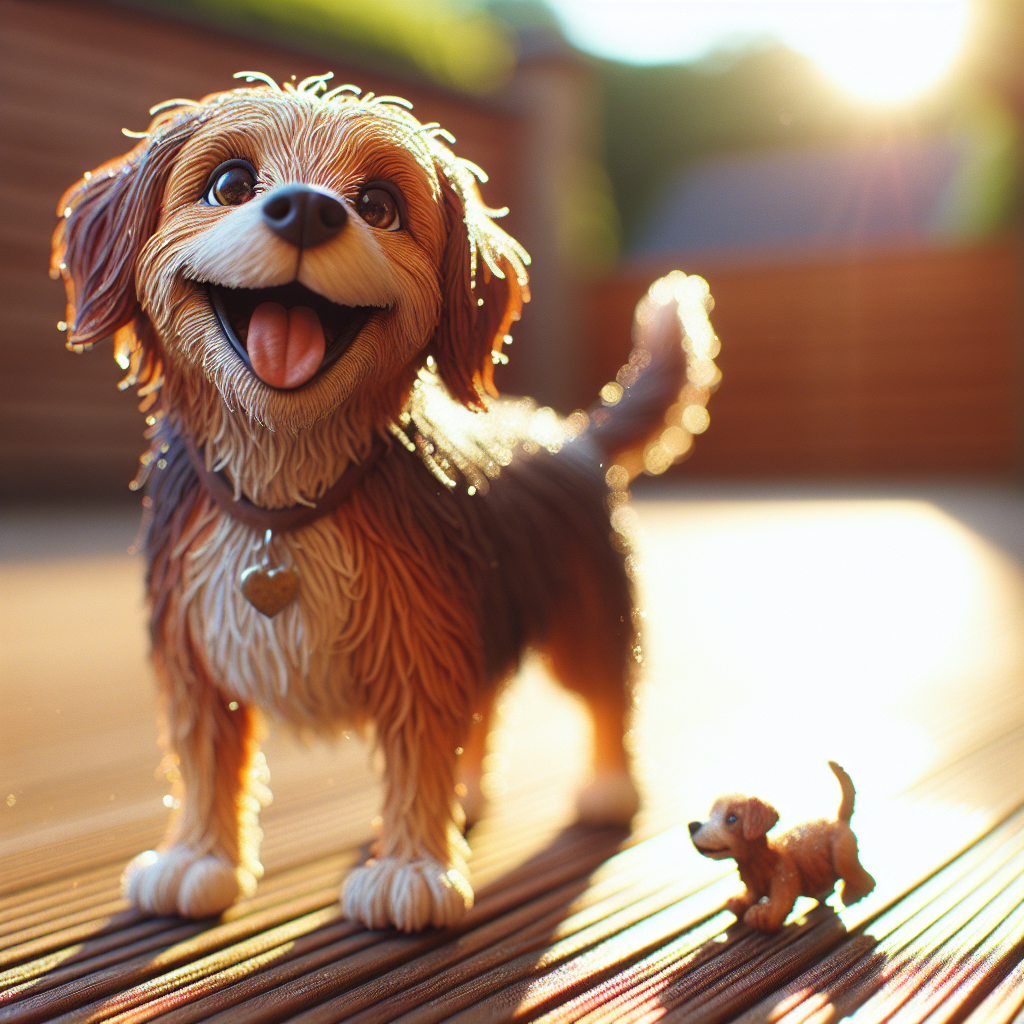Introduction to Flea Infestation

Fleas—tiny, pesky hitchhikers that love to throw a party in your home. These critters are the uninvited guests that just won’t leave. You might be chilling on your couch, sipping coffee, and suddenly feel an itch. An itch that’s suspiciously persistent. If you’ve ever wondered how do you know if you have fleas, you’re not alone. Many of us have been there, scratching our heads—literally—and thinking, not again!
The signs of flea infestation aren’t always glaringly obvious, but once you know what to look for, you’re halfway to winning the battle. Fleas are sneaky little devils. They might be hiding in your carpet or making a meal out of your beloved pet. And don’t even get me started on flea bites on humans—they’re like nature’s way of saying, “Surprise!” But hold on, we’ll get into that soon enough.
These pests have a knack for making themselves cozy in your surroundings. So, grab your detective hat, maybe a magnifying glass—though it’s not strictly necessary—and let’s figure out what’s going on in your flea-friendly abode.
Recognizing Flea Bites on Humans
Ah, flea bites—the calling card of these tiny invaders. If you’ve ever been bitten, you know how irritating they can be. It starts with a small, red bump. Then comes the itch, an itch that makes you want to scratch your skin off. Fun times, right? But how do you know if it’s really a flea bite?
Flea bites on humans typically appear in clusters or lines. They prefer places like your ankles or legs—easy access, I guess. These bites are often confused with mosquito bites, but flea bites are smaller, and the itch is something else. It’s like they want to remind you of their presence, just in case you forgot.
When you notice these bites, check your surroundings. Flea bites might be the first sign of a bigger problem. Look for symptoms of fleas in house—your sanctuary might not be as ‘flea-free’ as you thought.
Fleas and Your Furry Friends
Now, let’s talk about your pets. If you have a dog or cat, they might be the first to notice the unwelcome guests. You see, fleas have a thing for furry friends. They’re like that one friend who always shows up unannounced.
How to detect fleas on pets? It’s not rocket science, but it does require some snooping. Start by checking behind their ears and around their tails. Fleas love these spots. You might notice your pet scratching more than usual or biting at their skin. These are red flags—your pet might be hosting a flea party without knowing it.
Use a flea comb to inspect their fur. It’s a simple tool, but it works wonders. You’ll probably find flea dirt, which is a not-so-nice way of saying flea poop. Identifying flea dirt is crucial. It looks like tiny black specks, and if you place it on a wet paper towel, it’ll turn reddish-brown. Gross, but effective.
Checking for Fleas in Your Home
Moving on to your home—your castle, your domain. The last thing you want is fleas jumping around like they own the place. But how do you start checking for fleas in carpet or other areas?
First things first, put on some white socks and walk around your carpeted areas. Fleas are tiny, but they leave evidence. If you notice small black specks on your socks, it’s time to investigate further. Flea inspection methods aren’t complicated, but they require patience.
Grab a flashlight and check the nooks and crannies—under furniture, behind curtains, anywhere dark and cozy. Fleas love these spots. And don’t forget your pet’s bed. It’s like the VIP section for fleas.
The symptoms of fleas in a house can also include seeing them hopping around. If you catch one mid-hop, congrats! You’ve got confirmation. Now, it’s about planning your next move, which might involve vacuuming like a maniac or calling in reinforcements.
Understanding Flea Dirt and Its Signs
Finally, let’s dive into the delightful world of flea dirt. Sounds fancy, doesn’t it? It’s not. It’s flea poop, plain and simple. But understanding it is key to knowing if you have a flea problem.
Identifying flea dirt is pretty straightforward. If you see tiny black specks on your pet or around their resting spots, you’re looking at flea dirt. It’s the flea’s way of leaving a trail. Not exactly a bread crumb trail, but it works for them.
One trick to confirm it’s flea dirt is the wet paper towel test. As mentioned earlier, place the specks on a wet paper towel, and if they turn reddish-brown, bingo—you’ve got flea dirt. This means your pet might be playing host to these annoying insects.
So, there you have it—a crash course in flea detection. It’s not glamorous work, but someone’s gotta do it. And hey, now you’re equipped with the know-how to spot these unwelcome guests. Next time you feel that itch, you’ll know where to start looking. Thanks for sticking around, and good luck on your flea-finding mission!
The Sneaky Signs of Fleas You Might Miss
So, you’ve got an itch you can’t scratch, eh? Or maybe your pet does. Fleas, those tiny little jumpers, have a knack for sneaking in and setting up shop without paying rent. And believe me, they’re pros at hiding. You might be lounging on your couch, sipping your morning coffee, blissfully unaware that a small army of fleas is lurking in the shadows. They’re not always easy to spot—they’ve mastered the art of stealth. But there are hidden signs of fleas you might miss, little clues that shout “Hey, we’re here!” if you know where to look.
Ever notice your furry buddy acting like they’ve got ants in their pants? Could be fleas. They love to hang out in warm, cozy places like your pet’s fur. But sometimes, they leave behind signs that are easy to overlook. Like, did you know that fleas leave behind flea dirt? Yeah, it’s a thing. It’s basically flea poop, small black specks that look like pepper. You might find it on your pet’s skin or where they sleep. But more on that later.
Then there’s the scratching. Oh, the scratching. It’s like a never-ending dance move. Your pet might start biting, licking, and scratching more than usual. It’s their way of saying something’s up. And if you see red bumps on their skin, well, that’s another dead giveaway. Flea bites aren’t just a nuisance—they’re a call to action. Time to play detective, folks.
Flea Bites: When They Make Their Mark
Let’s dive into the world of flea bites. Picture this: you’re relaxing, enjoying a peaceful evening, and suddenly, your pet’s at it again, scratching like there’s no tomorrow. Flea bite symptoms on pets can be subtle or as obvious as a neon sign. These bites are tiny, red, and sometimes form a halo around the center. They love to show up in clusters or lines, especially on your pet’s belly, back, or tail.
Flea bites are more than just itchy spots. They can be troublemakers. Some pets are allergic to flea saliva, which makes the itching worse. It’s not just a case of “out of sight, out of mind”—these bites demand attention. If you notice your pet is losing fur or has scabs, it might be time to roll up your sleeves and take a closer look.
And hey, it’s not just pets that fall victim. Humans can get flea bites too. If you’re waking up with itchy red bumps on your ankles or legs, you might be hosting an uninvited flea party. These little pests don’t discriminate—they’re equal opportunity biters. So, keep an eye out and a flea comb handy.
The Itch Factor: Why Your Pet Can’t Stop Scratching
You ever had an itch that wouldn’t quit? Multiply that by ten, and you’ve got what your pet feels when fleas are in town. It’s the itch factor. Reasons for pet itching can range from allergies to skin conditions, but fleas are often the usual suspects. When fleas bite, they inject saliva that causes irritation. It’s like a bad itch you can’t scratch away, and it drives pets up the wall.
Imagine watching your pet scratch and bite at themselves more than usual. It’s heartbreaking, right? You might find yourself wondering—how do you know if you have fleas? Well, the scratching is a big hint. It’s like your pet is sending out an SOS. And if you see them rolling around on the carpet or rubbing against furniture, it’s another sign that fleas are making their mark.
Sometimes, the scratching leads to hot spots—painful, inflamed areas on the skin. It’s like a vicious cycle. Fleas bite, your pet scratches, and the skin gets more irritated. That’s why it’s crucial to be on the lookout and act fast. Your pet will thank you for it.
The Flea Dirt Mystery: What Is It and Why It Matters
Alright, let’s talk about flea dirt. Sounds gross, right? But it’s key to identifying if you’ve got fleas on your hands—or rather, your pet. Flea dirt is basically flea poop. It’s a mixture of blood and flea waste, and it looks like tiny black specks. You might spot it on your pet’s skin, especially if they have light fur, or in their bedding.
Here’s a trick: grab a damp paper towel and rub it over the suspected flea dirt. If it turns red, bingo—you’ve got flea dirt. This happens because it’s mostly digested blood. Identifying flea dirt on animals is like finding breadcrumbs that lead you to the source of the problem. It’s not just a clue—it’s a map.
Ignoring flea dirt is like ignoring smoke from a fire. It’s a warning sign that needs attention. So, if you spot flea dirt, it’s time to take action. But don’t worry—you’ve got this. With a bit of detective work and some elbow grease, you can tackle this flea mystery head-on.
The Flea Life Cycle: How Fast They Multiply
Now, let’s talk about the flea life cycle. It’s a whirlwind romance story—sort of. Fleas multiply faster than you can say “itchy.” Understanding flea life cycle is crucial in the battle against them. A female flea can lay up to 50 eggs a day. That’s right, 50! And these eggs can hatch anywhere from two days to two weeks, depending on the environment.
Once they hatch, the larvae are like tiny, wriggling worms. They eat organic debris and flea dirt—yep, they’re not picky eaters. In a week or so, they spin cocoons and transform into pupae. These pupae can hang out in their cocoons for a few days or a few months, just waiting for the right moment to emerge as adult fleas. It’s like they have their own internal alarm clock.
And when they do emerge, they’re hungry. Adult fleas need blood to survive and reproduce. That’s why they jump onto pets and humans. Before you know it, you’ve got a full-blown flea infestation. How do you know if you have fleas? Well, it’s all about the numbers. Spotting one flea might mean there are hundreds more lurking around. But don’t fret. With a bit of vigilance and some preventive measures, you can keep those pesky fleas at bay.
Thanks for sticking with me through this itch-inducing journey. Keep those eyes peeled and stay curious!
How Fleas Affect Your Home Environment
Oh, fleas—the tiny terrors that make themselves at home without an invite. You know the drill. You settle down to watch TV, and out of nowhere, your leg feels itchy. That’s right, folks—your home could be under siege by these pesky critters. Fleas are more than just a nuisance to your pets; they’re a full-scale assault on your peace of mind. You might be asking yourself, “How do you know if you have fleas?” Well, if you notice flea infestation signs like little black specks on your carpet or furniture, that’s a red flag. Those specks are not just dirt—they’re flea dirt, also known as flea feces. A gross thought, I know, but it’s a helpful identification tip.
So, what do these squatters do to your home? They jump around, bite, and reproduce at an alarming rate. Imagine a tiny army setting up camp in your living room—every fabric surface becomes their playground. And don’t get me started on the eggs they lay. They can fall into the cracks of your floorboards or nestle into your carpet fibers. Before you know it, a few fleas can become a full-blown infestation. You’ll want to arm yourself with some home flea prevention tips, like vacuuming regularly and washing pet bedding in hot water. Those simple steps can save you a world of hurt.
Spotting Fleas on Your Pets: What to Look For
Let’s play detective for a moment. Your pet’s scratching more than usual, maybe even biting at their skin. You might start wondering, “How do I know if my pet has fleas?” Enter the flea inspection tips. Check around their neck and tail—fleas love those spots. Comb through their fur with a flea comb, and keep an eye out for those pesky flea dirt specks. If you see tiny, dark spots that look like grains of pepper, your pet’s got company.
Those red bites on your pets? They’re not just irritating; they can lead to allergic reactions and infections. Your furry friend might even lose hair from the constant scratching. It’s a nasty business. The trick is early detection. The sooner you spot these critters, the better. You’ll have a fighting chance to use effective flea control methods before things get out of hand.
Common Misconceptions About Fleas
Ah, urban myths about fleas—they’re everywhere, and they’re itchier than the real thing. Some folks think fleas only target dirty homes. Nope. Fleas don’t discriminate. They’ll move right in whether your floors are spotless or not. Another common belief is that a single treatment will banish them for good. Spoiler alert: That’s not how it works. Fleas can be relentless little buggers, so you’ll need a series of treatments to keep them at bay.
Another myth is that fleas die off in winter. While it’s true they prefer warmer weather, they can survive indoors year-round. Your cozy home is like a tropical getaway for them. It’s a flea’s paradise. And let’s talk about flea treatment myths—some swear by natural remedies like garlic or brewer’s yeast. But while these might have some effect, they’re not foolproof. You’ve got to separate fact from fiction to win this battle.
DIY Flea Treatments: What Works and What Doesn’t
Alright, so you’ve decided to tackle the flea problem yourself. More power to you. But it’s a mixed bag when it comes to DIY flea treatments. Some methods are worth their weight in gold, while others are like throwing spaghetti at the wall. You might try a flea spray or powder, but read the label carefully. Some are great, but others—well, they’re about as useful as a screen door on a submarine.
Ever heard of diatomaceous earth? It’s a fine powder that can dehydrate fleas. Sprinkle it on your carpets and let it sit for a while before vacuuming. It’s one of those tricks that actually works. But remember, DIY isn’t always the answer. Don’t pour your hard-earned cash down the drain on ineffective treatments. When in doubt, go for tried-and-true methods.
When to Call in the Professionals
Sometimes, despite your best efforts, those fleas just won’t quit. That’s when it’s time to bring in the big guns—a professional flea exterminator. They’ve got the experience and know-how to tackle even the most stubborn infestations. Sure, it might cost a bit more than DIY methods, but the peace of mind? Priceless.
When you’re at your wit’s end, and you’ve tried every trick in the book, professionals can be a godsend. They’ll assess the situation and use targeted treatments that get to the root of the problem. Plus, they can offer advice on preventing future infestations.
So, that’s the lowdown on living with fleas. It’s not pretty, but armed with this knowledge, you can fight back. Here’s to a flea-free home. Thanks for sticking with me through this itchy tale. Good luck, and may your home soon be free of these unwelcome guests.
Quick Takeaways:
Alright, folks, let’s cut to the chase. The world of fleas is not glamorous, but it’s real. How do you know if you have fleas? Well, it’s not about rolling out the red carpet for these microscopic guests. They’re sneaky little devils, and the signs of flea infestation are often right under your nose. If you’ve got a pet that’s scratching like it’s auditioning for a flea circus, that’s your first clue. Flea bites on humans are another dead giveaway. They leave small, itchy red bumps, often on your ankles or legs.
Then there’s the infamous flea dirt—tiny black specks that look like pepper. Spot it on your pet or your carpet, and you might just have a flea problem. Speaking of carpet, checking for fleas in carpet is like a game of hide-and-seek. Use a white sock and shuffle around; if you see fleas hopping on, you’ve got your answer. As for symptoms of fleas in house, think itchy pets, mysterious bites, and even a sudden jump in your pet’s grooming routine.
Flea inspection methods aren’t rocket science. It’s about looking, really looking. And if you’re not sure how to detect fleas on pets, just run a flea comb through their fur. If you find more than just hair, it’s time to act. Remember, fleas love a good mystery—but now, you know how to catch them in the act.
FAQs:
1.
How do you know if you have fleas, and what are the hidden signs of fleas?
Fleas are sneaky, but they leave clues. If your pet is scratching a lot or you see flea dirt, those are signs. Flea bites on humans—small, red, itchy spots—are another hint. Keep an eye on your carpet, too. Use a white sock to shuffle around and see what jumps. If you find fleas, you’ve got a problem.
2.
How to detect fleas on pets?
Detecting fleas on your pet is easier than it sounds. Use a fine-toothed flea comb. Run it through your pet’s fur, especially around the neck and tail. If you find tiny black specks or actual fleas, there you go. Sometimes, you might see your pet biting or licking itself more than usual—another sign.
3.
What are flea bites on humans like?
Flea bites are tiny, red, and itchy. They often appear in clusters, usually on your ankles or legs. If you wake up with mysterious bites, it might be time to check your home for fleas. The itching can be relentless, so it’s best to deal with it quickly.
4.
How do you know if you have fleas in your house?
Fleas in the house might not wave a flag, but they do leave signs. Itching pets, flea dirt, and those little bites on your skin are indicators. Check your carpet and under furniture. Use light-colored socks to see if any fleas jump on. If you find them, it’s time to take action.
5.
What are some symptoms of fleas in the house?
Symptoms of fleas in the house include itchy pets, unexplained bites on your skin, and maybe a drop in your pet’s mood. Flea dirt—those tiny black specs—is another sign. You might also notice your pet grooming more often. These are all red flags.
Conclusion:
So there you have it—fleas are the unwanted guests that never seem to leave. How do you know if you have fleas? Well, it’s all about playing detective. Look for the signs of flea infestation like flea dirt, bites on you and your pets, and changes in your pet’s behavior. It’s not glamorous work, but it’s necessary. Checking for fleas in carpet, inspecting your pets, and keeping an eye on your own skin are all part of the process.
Remember, fleas are persistent, but you’re armed with the knowledge to tackle them head-on. Don’t let these tiny invaders take over your home. With a bit of patience and some detective work, you can reclaim your space. Thanks for sticking with me on this itch-inducing journey. May your home be flea-free soon. Keep those eyes peeled and stay curious!
References:
1. [Healthline – Identification of Flea Bites](https://www.healthline.com/health/identification)
2. [WebMD – Signs of Fleas in Pets](https://www.webmd.com/pets/spot-fleas)
3. [Better Health Channel – Fleas](https://www.betterhealth.vic.gov.au/health/conditionsandtreatments/fleas)
4. [Cleveland Clinic – Flea Bites](https://my.clevelandclinic.org/health/diseases/21718-flea-bites)
5. [Frontline UK – Signs of a Flea Infestation](https://uk.frontline.com/pet-advice/signs-of-a-flea-infestation)
Our solution eradicates fleas on contact without harmful chemicals, ensuring a safe environment for your pets and family. Easy to use and highly effective, SayByeBugs helps you maintain a flea-free home. Learn more and order today at SayByeBugs.com
Our solution eradicates fleas on contact without harmful chemicals, ensuring a safe environment for your pets and family. Easy to use and highly effective, SayByeBugs helps you maintain a flea-free home. Learn more and order today at SayByeBugs.com








